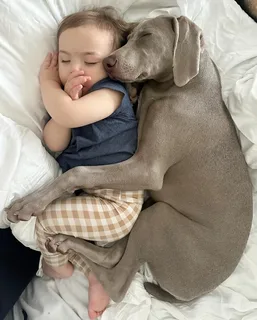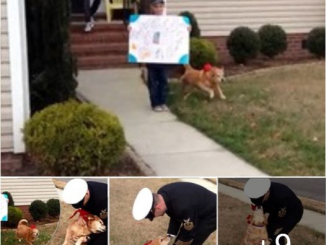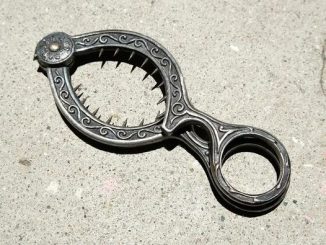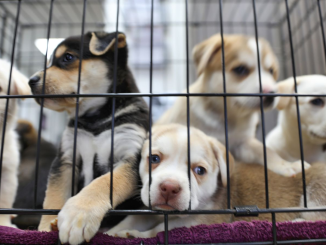
In the impoverished Gaza Strip, where most people struggle to make ends meet amid a crippling blockade, the suffering of stray dogs and cats often goes unnoticed.
Said el-Er, who founded the territory’s only animal rescue organisation in 2006, has been trying to change that. He and other volunteers rescue dogs and cats that have been struck by cars or abused and nurse them back to health – but there are too many.
So in recent weeks they have launched Gaza’s first spay-and-neuter programme. It goes against taboos in the conservative Palestinian territory, where feral dogs and cats are widely seen as pests and many view spaying and neutering as forbidden by Islam.
“Because the society is Muslim, they talk about halal (allowed) and haram (forbidden),” Mr El-Er said. “We know what halal is and what haram is, and it’s haram (for the animals) to be widespread in the streets where they can be run over, shot or poisoned.”
Islam teaches kindness towards animals, but Muslim scholars are divided on whether spaying and neutering causes harm. Across the Arab world, dogs are widely shunned as unclean and potentially dangerous, and cats do not fare much better.
Mr El-Er and other advocates for the humane treatment of animals face an added challenge in Gaza, which has been under an Israeli and Egyptian blockade since the Islamic militant group Hamas seized power in 2007. Gaza’s two million residents suffer from nearly 50 per cent unemployment, frequent power outages and heavy travel restrictions.
With many struggling to meet basic needs, animal care is seen as a waste of precious resources or a luxury at best. Mr El-Er’s group, Sulala for Animal Care, relies on private donations, which can be hard to come by.
Mr El-Er says his team can no longer keep up with the number of injured animals that they find or that are brought to the clinic. “The large number of daily injuries is beyond our capacity,” he said. “That’s why we resorted to neutering.”
On a recent day, volunteers neutered a street dog and two cats that had been brought in. There are few veterinary clinics and no animal hospitals in Gaza, so they performed the operations in a section of a pet store that had been cleaned and disinfected.
“We have shortages in capabilities, tools, especially those needed for orthopaedic surgeries,” said Bashar Shehada, a local veterinarian. “There is no suitable place for operations.”
Mr El-Er has spent years trying to organise a spay and neutering campaign but met with resistance from local authorities and vets, who said it was forbidden. He eventually secured a fatwa, or religious ruling, stating that it is more humane to spay and neuter animals than to consign an ever-growing population to misery and abuse.
Once the fatwa was issued, Mr El-Er said local authorities did not object to the campaign as a way of promoting public health and safety. The Hamas-run health and agriculture ministries allowed veterinarians to carry out operations and purchase supplies and medicine, he said.
The Gaza City municipality provided land for a shelter earlier this year. Before that, Mr El-Er kept the rescued animals at his home and on two small tracts of land that he leased.
The new shelter currently houses around 200 dogs, many of them blind, bearing scars from abuse or missing limbs from being hit by cars. At least one was adjusting to walking with a prosthetic limb. A separate section holds cats in similar shape.
The group tries to find homes for the animals, but here too it faces both economic and cultural challenges. Very few Gazans would keep a dog as a pet, and there’s little demand for cats. Some people adopt the animals from abroad, sending money for their food and care.
Over the past decade, international animal welfare groups have carried out numerous missions to evacuate anguished animals from makeshift zoos in Gaza and relocate them to sanctuaries in the West Bank, Jordan and Africa.
But there are no similar campaigns for dogs and cats, and Gaza has been sealed off from all but returning residents since March to prevent a coronavirus outbreak.
Mr El-Er’s phone rang recently and the caller said a dog had been hit by a car. Volunteers from Sulala brought it back to the shelter on the back of a three-wheeled motorbike and began treating it. Mr El-Er says they receive around five such calls every day.
The dog’s warm embrace of the 2-year-old reassured her parents as they left for work

In the bustling city where people are always on the move, finding moments of true connection can be a rarity. However, a heartwarming incident involving a dog and a 2-year-old child recently captivated the hearts of many, highlighting the profound and unconditional love animals can offer. The moment when this dog embraced the child, enveloping her in warmth and comfort, became a testament to the deep affection it held for the little girl, ultimately providing her parents with peace of mind as they headed off to work.
The dog in question is a lovable Golden Retriever named Max. Max has been a part of the Nguyen family for three years, and throughout this time, he has formed a special bond with the youngest member of the family, little Mia. Mia, a charming and curious 2-year-old, has grown up alongside Max, and their relationship has flourished from the very beginning.
One sunny morning, as Mia’s parents, Lily and Mark, were preparing to head to their respective workplaces, they were faced with a familiar dilemma. They were once again entrusting their precious child to the capable care of their loyal canine companion, Max. However, on this particular morning, something extraordinary happened.

As Lily handed Mia over to Max, something unexpected occurred. Instead of simply sitting by her side or following her around, Max gently leaned in, as if sensing Mia’s need for comfort. He lowered himself to the ground and extended his front paws, inviting the little girl into a warm and loving embrace. Mia, ever the intuitive child, responded by snuggling closer to Max’s furry chest, wrapping her tiny arms around him.
This tender embrace lasted for several minutes, and it seemed as if time stood still. The whole scene was a testament to the profound connection between the child and her four-legged friend. In that moment, Max’s warm, furry body and comforting presence were all Mia needed to feel safe and secure. The world outside, with its complexities and uncertainties, faded away, leaving just the two of them wrapped in an unspoken bond of love.
Lily and Mark watched in awe, touched by the undeniable affection that their dog had for their daughter. Max, who had been a faithful companion and protector for Mia since her birth, had now shown an even deeper level of care and concern for her well-being. In that brief yet profound moment, they realized that they could trust Max with Mia, knowing that he would always keep her safe.

As Lily and Mark went off to work that day, they left with a newfound sense of peace and assurance. They knew that Max would watch over Mia, just as he had done during countless other moments, with his unwavering love and dedication. Their family’s bond had grown stronger, and they were grateful for the incredible connection between their daughter and her canine friend.
This heartwarming incident serves as a reminder of the extraordinary relationships that can form between humans and their animal companions. It demonstrates the capacity of animals to offer love, support, and comfort when we need it most. The story of Max and Mia also reminds us that the world can be a better place when we open our hearts to the unconditional love that our animal friends are willing to share.
In a busy, fast-paced world, the touching moment when a dog lovingly embraced a 2-year-old child became a symbol of the pure, unbreakable bond between animals and humans. Max’s profound love for Mia provided her parents with a sense of security and peace, reminding us all of the extraordinary connections that can exist between pets and their families.



Leave a Reply